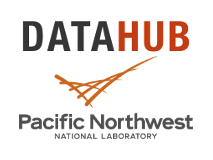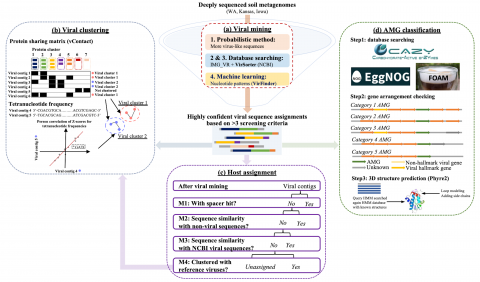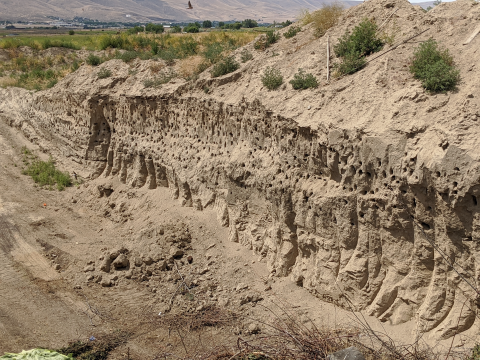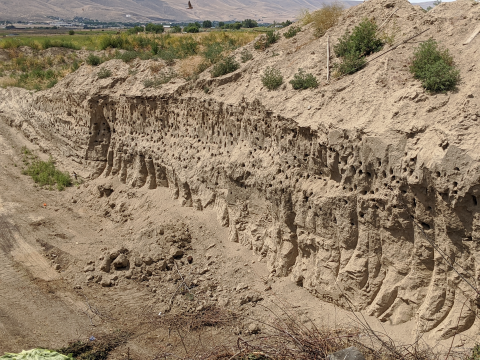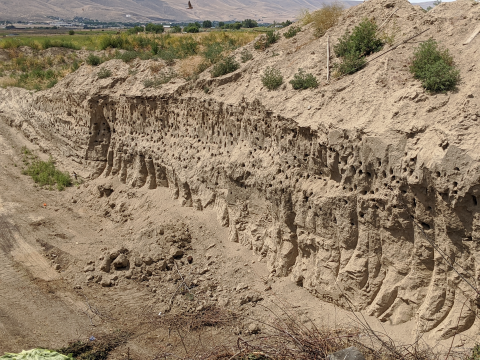Filter results
Category
- Scientific Discovery (248)
- Biology (153)
- Earth System Science (117)
- Human Health (92)
- Integrative Omics (59)
- Microbiome Science (26)
- National Security (20)
- Computational Research (15)
- Computing & Analytics (14)
- Energy Resiliency (9)
- Data Analytics & Machine Learning (7)
- Visual Analytics (6)
- Materials Science (5)
- Atmospheric Science (4)
- Chemical & Biological Signatures Science (4)
- Coastal Science (4)
- Renewable Energy (4)
- Weapons of Mass Effect (4)
- Chemistry (3)
- Computational Mathematics & Statistics (3)
- Data Analytics & Machine Learning (3)
- Cybersecurity (2)
- Distribution (2)
- Ecosystem Science (2)
- Electric Grid Modernization (2)
- Energy Efficiency (2)
- Energy Storage (2)
- Grid Cybersecurity (2)
- Plant Science (2)
- Solar Energy (2)
- Bioenergy Technologies (1)
- Computational Mathematics & Statistics (1)
- Grid Analytics (1)
- High-Performance Computing (1)
- Subsurface Science (1)
- Terrestrial Aquatics (1)
- Transportation (1)
- Wind Energy (1)
Dataset Type
- Omics (86)
- Transcriptomics (51)
- Proteomics (39)
- Sequencing (39)
- Metabolomics (28)
- Lipidomics (26)
- Simulation Results (17)
- Amplicon (16S, ITS) (15)
- Metagenomics (9)
- Microarray (9)
- Genomics (4)
- Computed Analysis (3)
- ChIP-seq (2)
- Geospacial (2)
- Staff (2)
- Cybersecurity (1)
- Electromagnetic Spectrum (1)
- Mass Spectra (1)
- Microscopy (1)
- Phenomics (1)
- Whole genome sequencing (WGS) (1)
Tags
- Virology (77)
- Immune Response (53)
- Time Sampled Measurement Datasets (50)
- Gene expression profile data (47)
- Differential Expression Analysis (46)
- Homo sapiens (34)
- Mass spectrometry data (29)
- Multi-Omics (28)
- Viruses (24)
- Health (21)
- Soil Microbiology (21)
- Virus (21)
- MERS-CoV (18)
- Mus musculus (18)
- Synthetic (14)
- sequencing (13)
- West Nile virus (13)
- Ebola (11)
- Influenza A (11)
- Omics (10)
- Metagenomics (9)
- Microbiome (8)
- PerCon SFA (8)
- Resource Metadata (8)
- Genomics (7)
- Machine Learning (7)
- Fungi (6)
- Human Interferon (6)
- Mass Spectrometry (6)
- Microarray (6)
Category
Category
Category
Viral genome assembly annotations from terabase metagenomes (TmG.1.0) from uncultivated soil collections from the IAREC field sites in Washington (IAREC), Kansas (KBPS), and Iowa (COBS), USA. Uncultivated virus Genomes (identified from soil metagenome datasets) Data DOI Package.
Category
Exhaled breath condensate proteomics represent a low-cost, non-invasive alternative for examining upper respiratory health. EBC has previously been used for the discovery and validation of detected exhaled volatiles and non-volatile biomarkers of disease related to upper respiratory system distress...
The continual growth in energy demand has resulted in the deployment of renewable energy generators to reduce the impact of fossil fuel dependence. However, these generators often suffer from intermittency and require energy storage when there is over-generation and the subsequent release of this...
Viral communities detected from three large grassland soil metagenomes with historically different precipitation moisture regimes.
Category
Complete replicate terabase metagenome (TmG.2.0) of grassland soil microbiome collections from KPBS field site in Manhattan, KS. Metagenome (unclassified soil sequencing) Data DOI Package, version 2.0.
Category
Complete replicate terabase metagenome (TmG.2.0) of grassland soil microbiome collections from COBS field site in Boone County, IA. Metagenome (unclassified soil sequencing) Data DOI Package, version 2.0.
Category
Complete replicate terabase metagenome (TmG.2.0) of grassland soil microbiome collections from IAREC field site in Prosser, WA. Metagenome (unclassified soil sequencing) Data DOI Package, version 2.0.
Category
Viral communities detected from three large grassland soil metagenomes with historically different precipitation moisture regimes.
Category
Many important application data streams can be modeled as a complex graph of entities, where each graph node or entity is associated with a multi-variate time-series. The overall system’s behavior is modeled as a dynamical system, and it evolves through structural changes in the graph, and/or...
Datasets
1
GridSTAGE (Spatio-Temporal Adversarial scenario GEneration) is a framework for the simulation of adversarial scenarios and the generation of multivariate spatio-temporal data in cyber-physical systems. GridSTAGE is developed based on Matlab and leverages Power System Toolbox (PST) where the...
Soil fungi facilitate the translocation of inorganic nutrients from soil minerals to other microorganisms and plants. This ability is particularly advantageous in impoverished soils, because fungal mycelial networks can bridge otherwise spatially disconnected and inaccessible nutrient hotspots...
